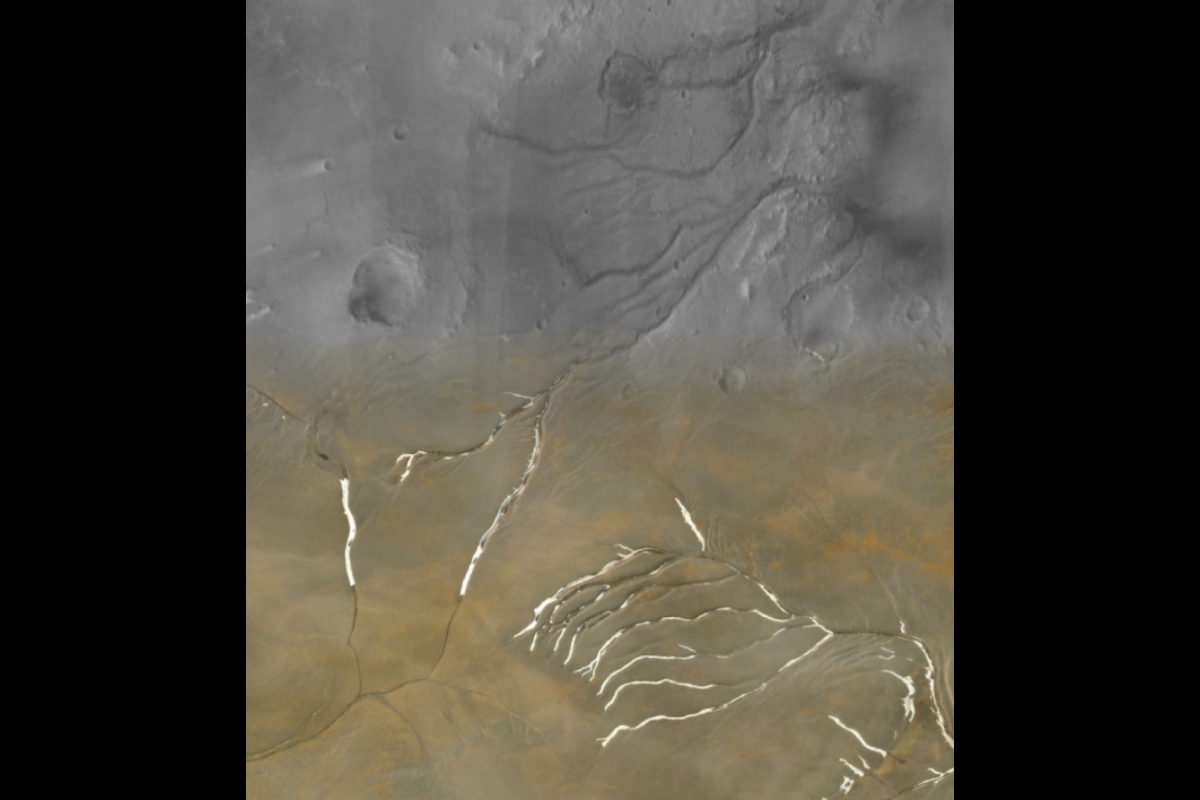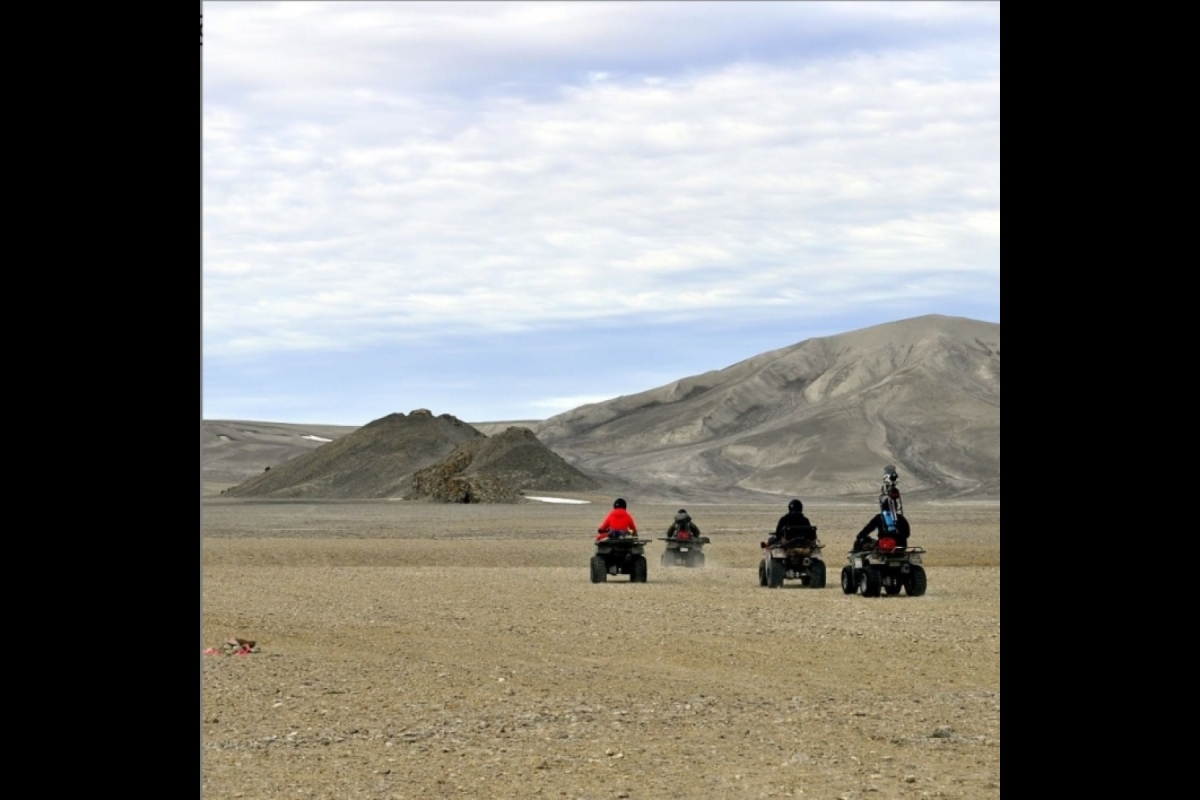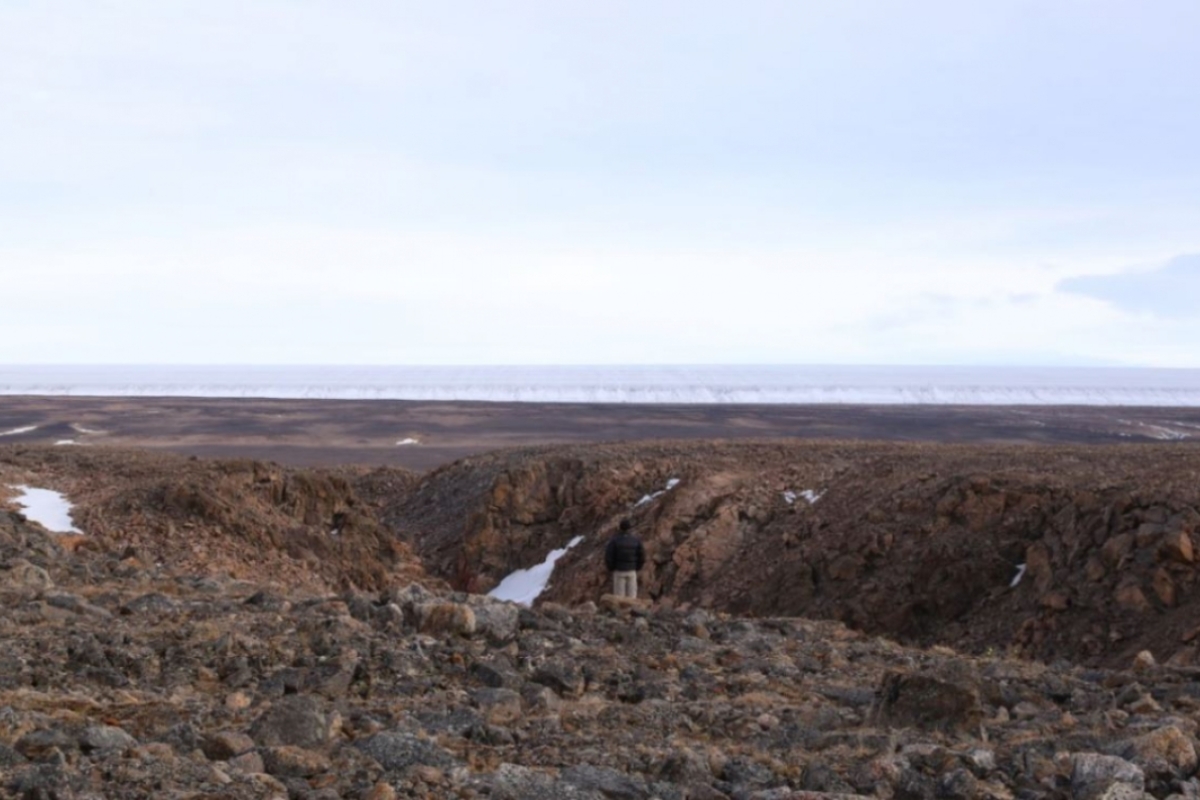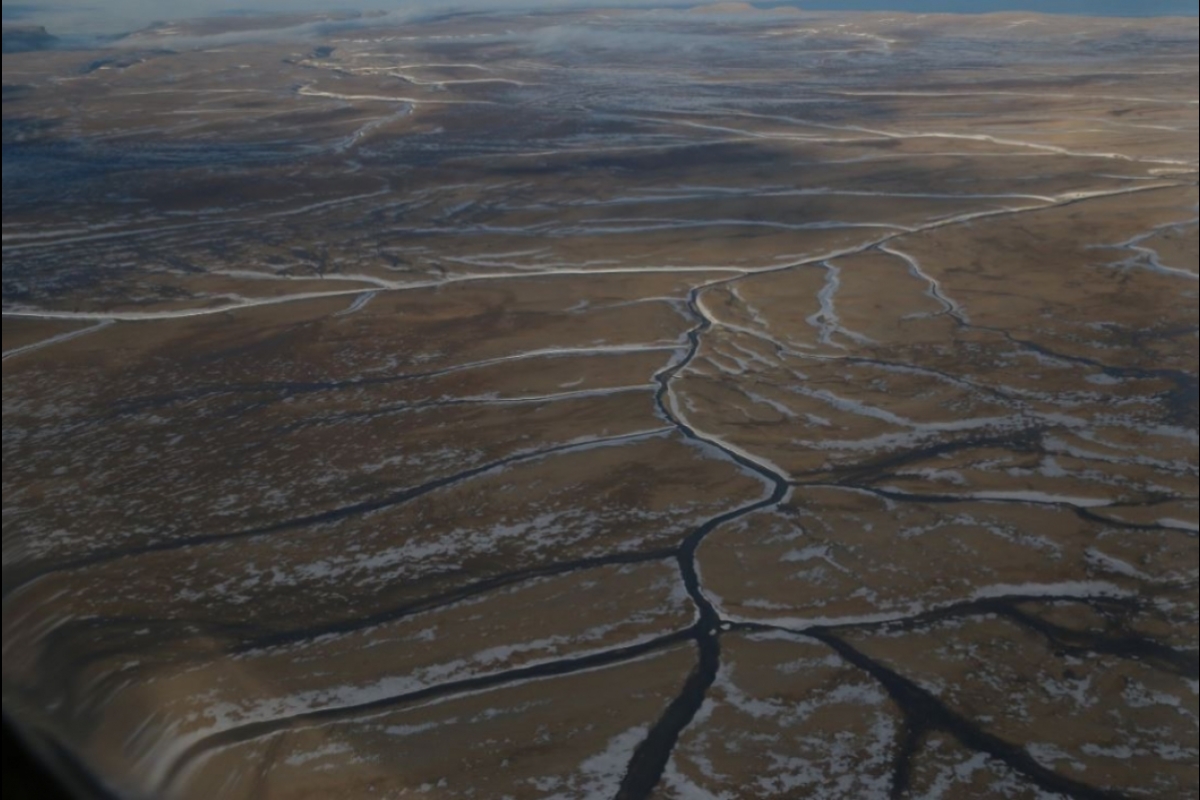Early Mars was covered in ice sheets, not flowing rivers, new research shows
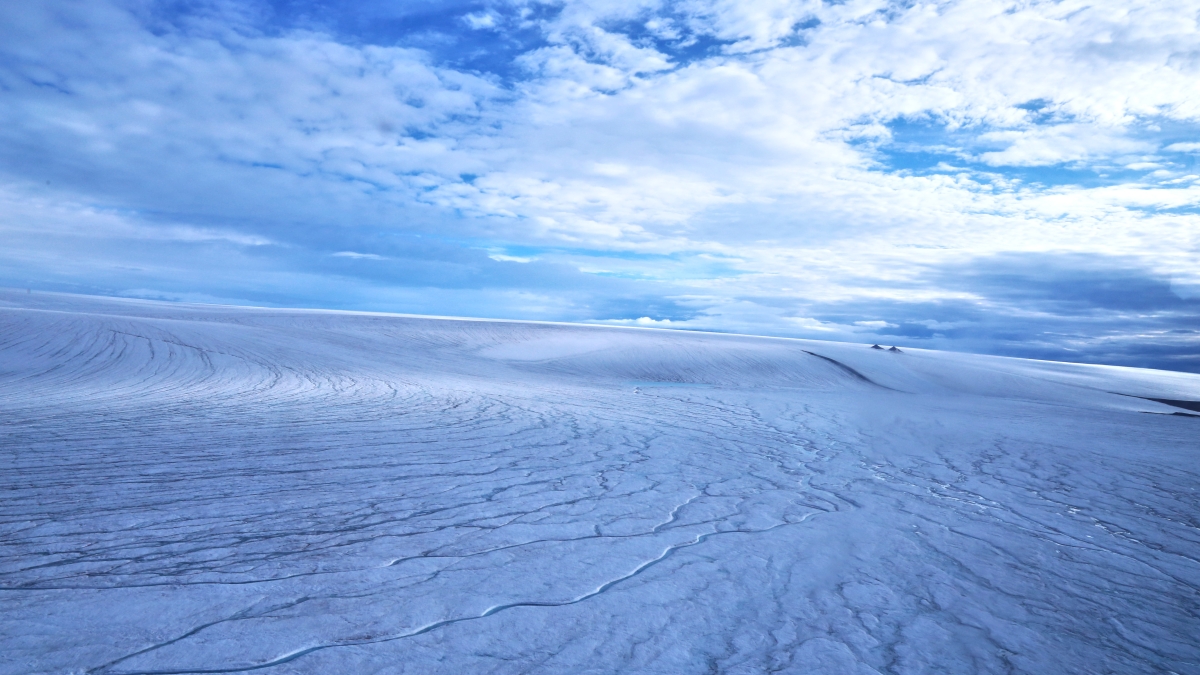
The western edge of the Devon ice cap on the Canadian Arctic Archipelago. The similarity between many Martian valleys and the subglacial channels on Devon Island in the Canadian Arctic motivated the authors to conduct their comparative study. Photo Credit: Grau Galofre/ASU
Editor’s note: This story is being highlighted in ASU Now’s year in review. Read more top stories from 2020.
A large number of the valley networks scarring the surface of Mars were carved by water melting beneath glacial ice, not by free-flowing rivers as previously thought, according to new research published in Nature Geoscience. The findings effectively throw cold water on the dominant “warm and wet ancient Mars” hypothesis, which postulates that rivers, rainfall and oceans once existed on the red planet.
To reach this conclusion, lead author and postdoctoral research scholar Anna Grau Galofre of Arizona State University’s School of Earth and Space Exploration developed and used new techniques to examine thousands of Martian valleys. She and her co-authors also compared the Martian valleys to the subglacial channels in the Canadian Arctic Archipelago and uncovered striking similarities.
“For the last 40 years, since Mars’ valleys were first discovered, the assumption was that rivers once flowed on Mars, eroding and originating all of these valleys,” says Grau Galofre.
“But there are hundreds of valleys on Mars, and they look very different from each other. If you look at Earth from a satellite, you see a lot of valleys: Some of them made by rivers, some made by glaciers, some made by other processes, and each type has a distinctive shape. Mars is similar, in that valleys look very different from each other, suggesting that many processes were at play to carve them.”
The similarity between many Martian valleys and the subglacial channels on Devon Island in the Canadian Arctic motivated the authors to conduct their comparative study.
“Devon Island is one of the best analogues we have for Mars here on Earth — it is a cold, dry, polar desert, and the glaciation is largely cold-based,” said co-author Gordon Osinski, professor at Western University in Ontario, Canada.
In total, the researchers analyzed more than 10,000 Martian valleys, using a novel algorithm to infer their underlying erosion processes.
“These results are the first evidence for extensive subglacial erosion driven by channelized meltwater drainage beneath an ancient ice sheet on Mars,” said co-author Mark Jellinek, professor at the University of British Columbia in Canada.
“The findings demonstrate that only a fraction of valley networks match patterns typical of surface water erosion, which is in marked contrast to the conventional view. Using the geomorphology of Mars’ surface to rigorously reconstruct the character and evolution of the planet in a statistically meaningful way is, frankly, revolutionary.”
Grau Galofre’s theory also helps explain how the valleys would have formed 3.8 billion years ago on a planet that is farther away from the sun than Earth, during a time when the sun was less intense.
“Climate modelling predicts that Mars’ ancient climate was much cooler during the time of valley network formation,” said Grau Galofre. “We tried to put everything together and bring up a hypothesis that hadn't really been considered: that channels and valleys networks can form under ice sheets, as part of the drainage system that forms naturally under an ice sheet when there's water accumulated at the base.”
These environments would also support better survival conditions for possible ancient life on Mars. A sheet of ice would lend more protection and stability of underlying water, as well as provide shelter from solar radiation in the absence of a magnetic field — something Mars once had, but which disappeared billions of years ago.
Though Grau Galofre’s research was focused on Mars, the analytical tools she developed for this work can be applied to uncover more about the early history of our own planet.
“Currently we can reconstruct rigorously the history of global glaciation on Earth going back about a million to 5 million years,” said Jellinek. “This work will enable us to explore the advance and retreat of ice sheets back to at least 35 million years ago — to the beginnings of Antarctica, or earlier — back in time well before the age of our oldest ice cores. These are very elegant analytical tools.”
This article was written by University of British Columbia media relations with contributions from Karin Valentine, marketing and media relations manager, ASU School of Earth and Space Exploration.
More Science and technology

Why your living environment defines how people perceive you
Stereotypes are pervasive.We've all heard of stereotypes based on gender, race, age or religion. But what about making an…
2 ASU faculty elected as fellows to National Academy of Inventors
Arizona State University faculty members Bertram Jacobs and Klaus Lackner have been elected as fellows to the National…

Harvesting satellite insights for Maui County farmers
Food sovereignty can refer to having access to culturally significant foods, but Noa Kekuewa Lincoln believes it goes farther…
